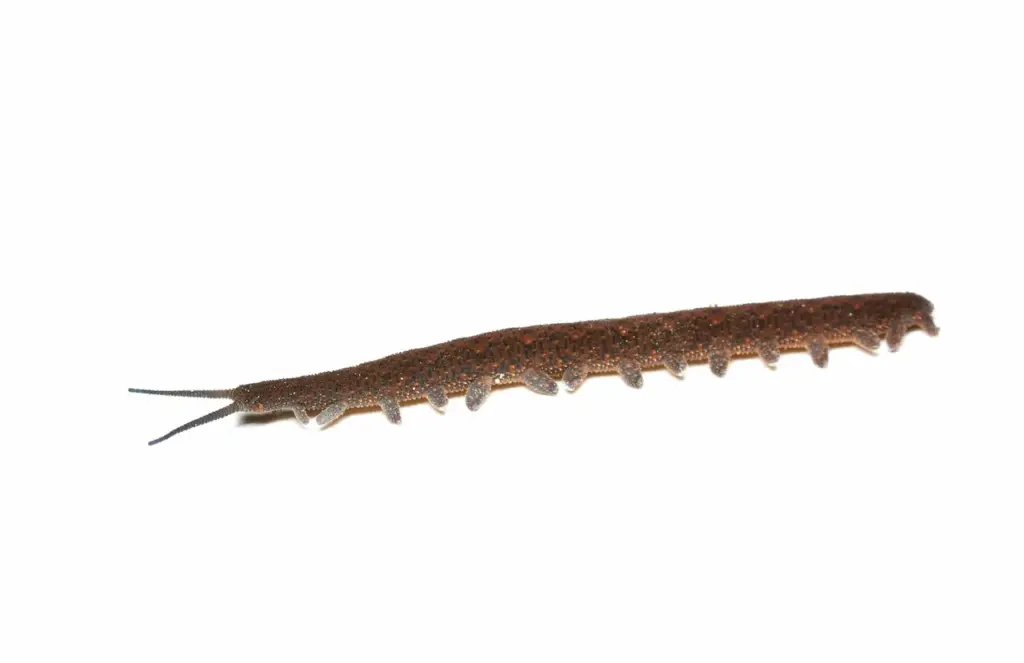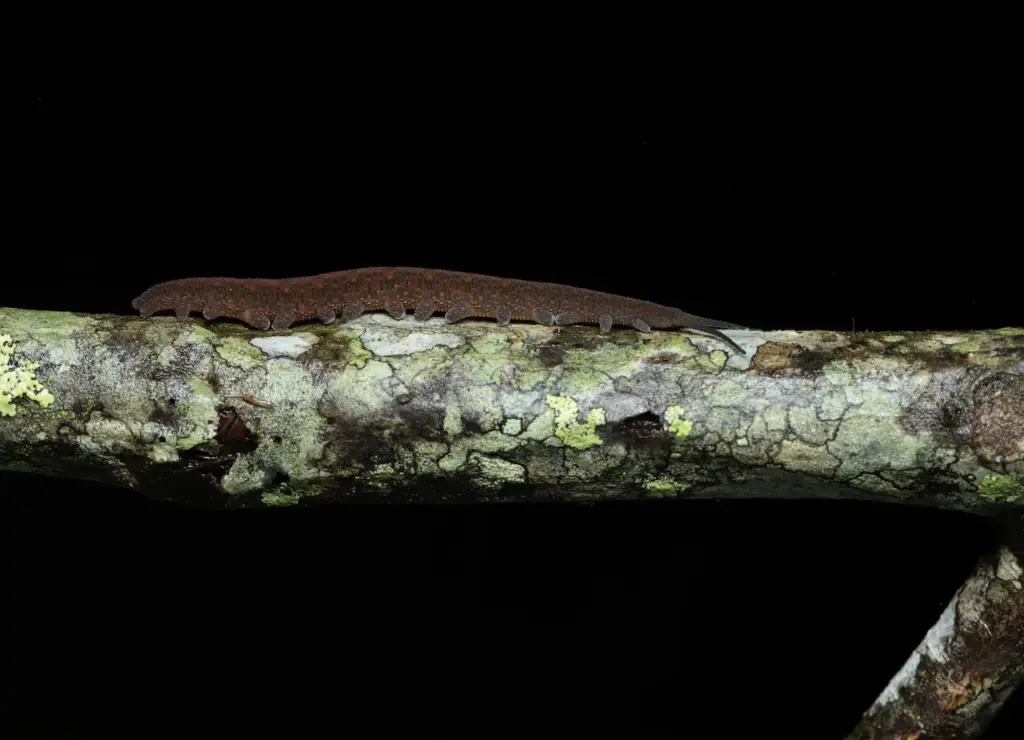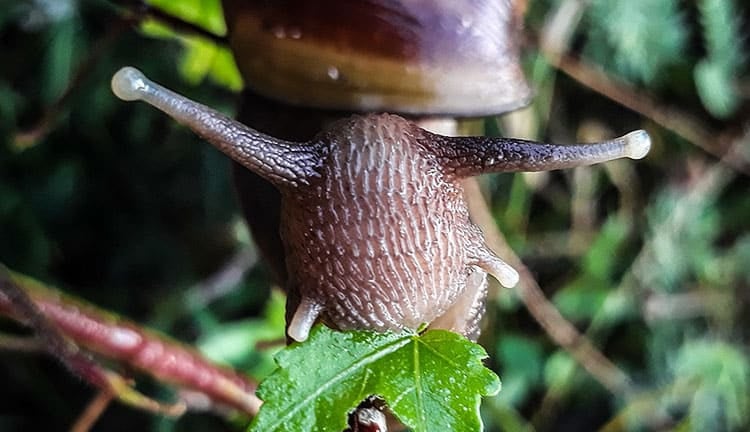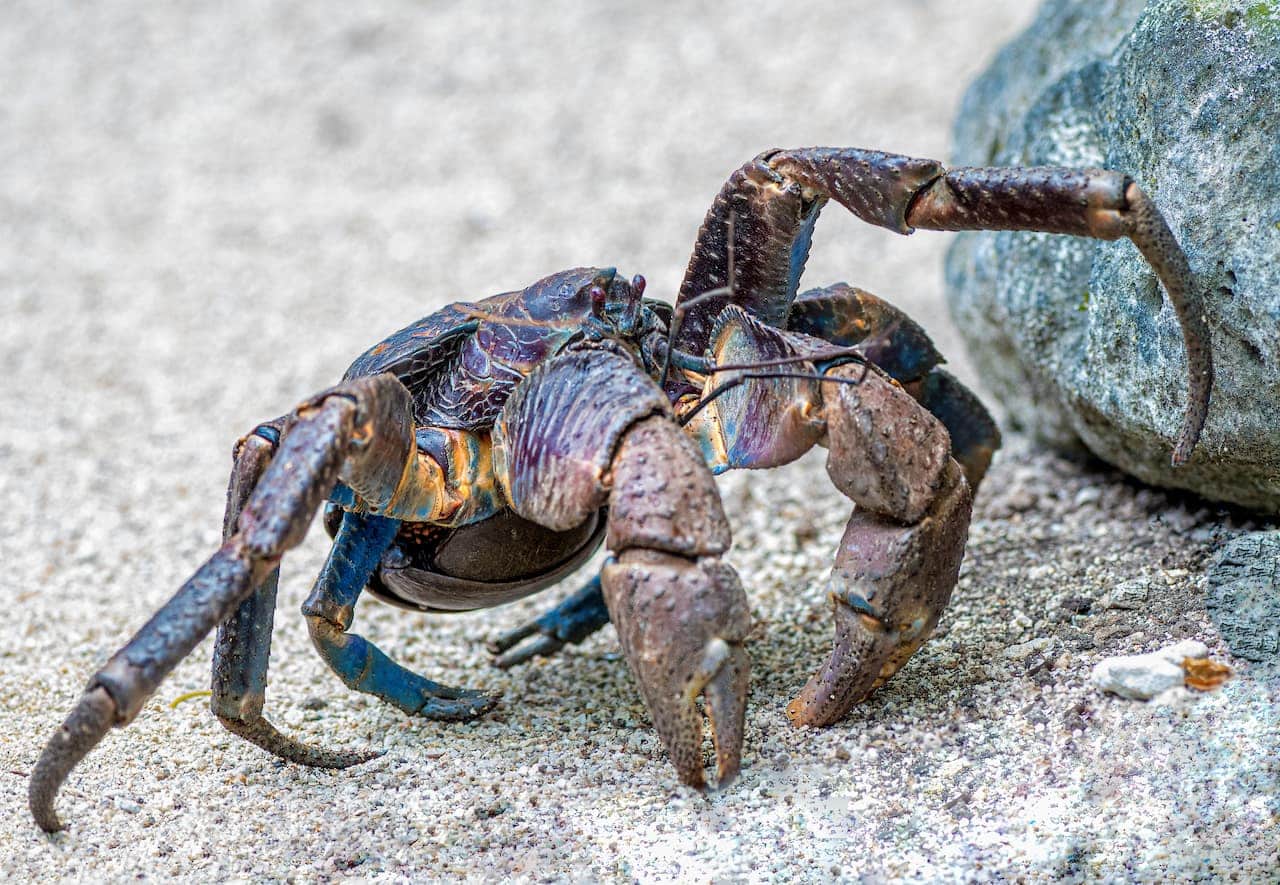Are Velvet Worms Rare?
Velvet Worms are curious and evasive invertebrate critters. Scientifically speaking, they belong to a unique phylum called Onychophora, consisting only of velvet worm species.
Despite their name and looks, Velvet Worms are neither worms, insects, centipedes, or slugs. They’re not even arthropods – although the two groups are related. Their closest of kin seem to be the tiny Tardigrades, also known as moss piglets.
However, unlike their universally present microscopic cousins that are and can survive anything from full dehydration to outer space radiation, Velvet worms are scarcely distributed and highly sensitive to environmental conditions. They live their secretive, nocturnal lives in warm, constantly-humid places and are seldom encountered even by scientists who study them!
Unfortunately, their rarity has a darker side to it. The limited ranges have put many Velvet Worm species at risk of becoming endangered or even extinct.
In fact, some already are.

Why are Velvet Worms So Hard to Find?
Despite their fearsome reputation as predators, Velvet worms have a major weakness – they cannot control their water loss.
Unlike insects, Onycophorans can’t close their tracheae – the system of breathing tubes with openings alongside the animal’s body. Therefore, if a velvet worm is exposed to dry conditions, all the water will simply evaporate through the always-open pores, and the animal will die.
The Velvet Worms are also photophobic – simply put, they hate light. This is thought to be a “precautionary” adaptation to dehydration sensitivity – there is no better way to be parched alive than to expose oneself to the sun’s rays. And that is especially true if you are an Onychophoran.
That is why velvet worms are doomed to forever lurk in dark and damp places such as rotten logs, thick leaf litter, and under rocks. In tropical forests, micro-habitats like this are widespread but are hardly accessible to the human senses – especially at night when the elusive Onychophorans venture out to hunt.
In fact, velvet worms are such a rare find that, in the absence of more substantial evidence, researchers often estimate the abundance of endangered velvet worm species based only on search success rate (e.g., whether the animals were found) rather than their absolute numbers – there is no way to reliably sample them.
So, even when you’re in a far-away velvet worm jungle habitat, velvet worms are hard to encounter, even by professionals who have dedicated their careers to these plushie-like invertebrates.
Where Do Velvet Worms Live?
As mentioned before, Velvet worms have a very limited distribution. They live exclusively in the tropics near the Equator and in the humid subtropical areas of the southern hemisphere – from South America to New Zealand. Also, they inhabit forested tropical islands such as the Caribbean.
Many of the ~230 species are endemic – meaning that each one is found only in a specific region of the world. This very fact makes them potentially vulnerable to any disturbances in these habitats.
Unfortunately, the same tropical ecosystems that velvet worms call their home are under extreme pressure from development and face human-propelled destruction. In 2019, it was estimated that every minute, a territory of the Amazon rainforest the size of a football pitch is destroyed by slash-and-burn agriculture – mostly for cattle farming but also for soy and other crop production.
For example, an attractive velvet worm Epiperipatus acacioi is an endemic species from the Atlantic rainforest of the Brazilian state of Minas Gerais – found in two areas only.
At the same time, Minas Gerais is one of the largest coffee producers, the second-largest cattle region in Brazil, and is renowned for producing many other crops. The overlap between the economic interests of humans and the survival interests of the velvet worm is fairly obvious.
Are Velvet Worms Endangered?
Due to the research difficulties mentioned above, velvet worms’ numbers are notoriously hard to track. Still, some relations were established, and the scientific community agrees that there are highly vulnerable velvet worm populations out there.
For now, 11 Onycophoran species have ended up on the IUCN Red List of Threatened Species, the most relevant endangered species classification in the world. In the last century, seven velvet worm species have become endangered or extinct.
Here is the full list of velvet Worm species listed as threatened.
- Macroperipatus insularis
- Mesoperipatus tholloni
- Opisthopatus roseus
- Peripatoides indigo
- Peripatoides suteri
- Peripatopsis alba
- Peripatopsis clavigera
- Peripatopsis leonina
- Plicatoperipatus jamaicensis
- Speleoperipatus spelaeus
- Tasmanipatus anophthalmus
We know that the common endemism and scarcity make many velvet worm species vulnerable. However, not nearly enough is known about the mysterious “worm’s” ecology and biology to establish the species’ true status or ensure an error-proof approach to conservation.
Still, there are attempts worth celebrating.
Remember the endemic Brazilian species Epiperipatus acacioi? Although it is not officially on the endangered Onycophoran list, its rarity, and limited range have prompted the establishment of the Estação Ecológica do Tripuí nature reserve. It was one of the rare historical cases when a nature reserve was established to protect an invertebrate species – benefiting countless other creatures who share their habitats as well.
How Can I Help Save Velvet Worms?
Very few people ever get an opportunity to help save an endangered velvet worm species directly. Still, there are ways any of us can influence the wider picture.
Do not buy velvet worms to keep as pets
Pet trade contributes to the demise of a staggering number of wild species-turned-pets. Unless you’re absolutely 100% sure they’ve been bred in captivity, never buy velvet worms to keep at home.

Tell people about velvet worms and how cool they are
People are fearful of or are uninterested in the things they don’t know. And many people don’t have a clue what velvet worms are! The more individuals learn about how cool these peculiar creatures are, the greater will be the public pressure to protect them and their habitats.
Spread awareness about tropical habitat importance – and collapse
Rainforests are important for more than just Onychophorans. They are the most biodiverse places on Earth, help regulate our climate, and bring much-needed rain to faraway places. If we fail to protect them, both velvet worms and humans, along with millions of other creatures, will be at a loss.
Support local conservation initiatives
The existing conservation programs are commonly at risk of being extinguished and need citizen support – be it through small donations, event attendance, or simply spreading the word about their work.
Additionally – if you are a young person worried about the plight of the Velvet Worm, you may already be a great candidate to become a conservation scientist!
Summing it up – Are Velvet Worms Rare?
Velvet worms are rare – and in more ways than one. First off, they’re hard to locate in their habitat, making them an exotic sight even for seasoned field scientists. Bernal M. Brenes and Julián M. Nájera, two biologists who study onychophorans, said it best in one of their scholarly articles:
“Onychophorans, or velvet worms, are small invertebrates that most biologists study in theory, but due to their rarity, never see in real life.“
Secondly, the limited natural range and habitat destruction make them very vulnerable and put species at risk of becoming endangered or even extinct. For now, there are eleven Onychophora species on the IUCN Red List.
Despite multiple threats, velvet worms have a strong fanbase – there are worthy conservation initiatives aimed at Onychophorans and their habitats. For the sake of curious critters’ future and our own, let’s hope and ensure they prevail.
Resources
How the Pet Trade Is Killing Off Animal Species. (2017 U.S. News)
Epiperipatus cratensis sp. nov. (Onychophora: Peripatidae) from northeastern Brazil (2010. Research Gate/Neotropical Biology and Conservation)
Population structure and demographic inferences concerning the endangered onychophoran species Epiperipatus acacioi (Onychophora: Peripatidae) (2011. Research Gate / Genetics and Molecular Research)
Role of Onychophora for conservation. Onychophora website
Tasmanipatus anophthalmus (Blind Velvet Worm) Conservation Advice. Tasmanian Government
‘Football pitch’ of the Amazon forest lost every minute. (2019. BBC)
Tardigrades: Our Practically Indestructible Moon Overlords (2019. University of Florida)
The Mysterious Velvet Worm. (2013. The Night Tour Blog)





